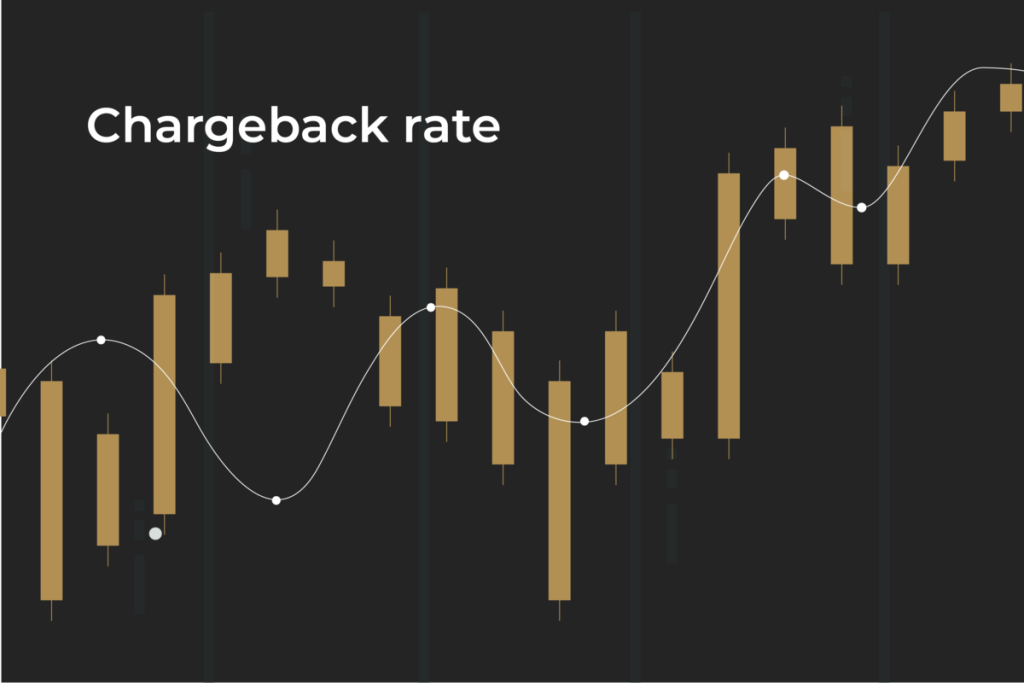Chargebacks are a critical issue in eCommerce. They occur when a customer disputes a transaction, resulting in a reversal of funds from the merchant’s account. Understanding how to calculate and manage chargeback rates is essential for any business that processes payments. This article outlines how to calculate chargeback rates, the impact of high chargeback ratios, and practical strategies for maintaining them at acceptable levels.
Understanding Chargeback Rates
What is a Chargeback Rate?
The chargeback rate, also known as the chargeback ratio, is a key metric used by payment processors and card networks to assess a merchant’s risk level. It is calculated by dividing the number of chargebacks by the total number of transactions processed within a specific period, usually a month.
For example, if a merchant processes 10,000 transactions in a month and incurs 100 chargebacks, the chargeback rate would be 1%. This percentage is critical because card networks like Visa and Mastercard set thresholds for what is considered an acceptable chargeback rate. Typically, this threshold is below 1%.
Importance of a Low Chargeback Rate
A chargeback rate above the industry threshold can result in being labeled a “high-risk merchant.” This designation can lead to increased fees, stricter monitoring, and the potential loss of payment processing capabilities. For example, Visa’s Fraud Monitoring Program charges $50 for each dispute filed by merchants classified as high-risk, while Mastercard’s Excessive Chargeback Program imposes similar fees.
Table 1: Chargeback Rate Thresholds by Card Networks
| Card Network | Standard Threshold | Early Warning Threshold | High-Risk Tier Penalty Fees (per chargeback) |
|---|---|---|---|
| Visa | 0.9% | 0.65% | $50 (Fraud Monitoring Program) |
| Mastercard | 1% | 0.8% | $100 (Excessive Chargeback Program) |

Calculating Chargeback Rates
Step-by-Step Calculation
Calculating your chargeback rate is straightforward:
- Count the number of chargebacks in a month. This information is available on your merchant account statement or through your payment processor.
- Determine the total number of transactions processed in the same month.
- Divide the number of chargebacks by the total number of transactions.
- Multiply the result by 100 to get the percentage, which is your chargeback rate.
Example:
- Chargebacks: 50
- Total Transactions: 10,000
- Chargeback Rate: (50 / 10,000) * 100 = 0.5%
This chargeback rate of 0.5% would be within the acceptable range set by most payment networks.
Volume-Based Chargeback Rate Calculation
For businesses with high-ticket items, calculating the chargeback rate based on transaction volume might be more relevant.
Example:
- Total Chargeback Amount: $10,000
- Total Transaction Volume: $1,000,000
- Volume-Based Chargeback Rate: ($10,000 / $1,000,000) * 100 = 1%
Industry-Specific Chargeback Rates
Chargeback rates vary across industries. For example, the travel industry generally has higher chargeback rates due to cancellations and service disputes. Understanding your industry’s average chargeback rate can help you assess your performance more accurately.
Table 2: Average Chargeback Rates by Industry
| Industry | Average Chargeback Rate |
|---|---|
| Travel | 0.59% |
| Gaming | 0.7% |
| Financial Services | 0.7% |
| Retail | 0.55% |
| Healthcare | 0.5% |
Impact of High Chargeback Rates
Consequences of High Chargeback Rates
Exceeding the acceptable chargeback rate threshold can lead to several consequences:
- Increased Fees: High-risk merchants may incur additional fees for every chargeback. These fees can range from $50 to $300 per incident.
- Account Termination: Persistent high chargeback rates can lead to the termination of the merchant’s account, preventing the business from processing payments.
- Reputation Damage: A high chargeback rate can harm a merchant’s reputation, making it difficult to secure partnerships with payment processors in the future.

Strategies to Lower Chargeback Rates
Maintaining a low chargeback rate is crucial for business stability. Here are effective strategies:
- Implement Fraud Prevention Tools
- Use Address Verification Service (AVS) and Card Verification Value (CVV) checks to reduce fraudulent transactions. Fraud detection software is essential in identifying and blocking suspicious transactions before they occur.
- Enhance Customer Service
- Provide clear channels for customers to resolve disputes before they escalate to chargebacks. This includes accessible customer support and transparent return and refund policies.
- Accurate Product Descriptions
- Ensure product descriptions match what is delivered. Misleading descriptions are a common cause of chargebacks.
- Use Chargeback Alerts and Monitoring Tools
- Chargeback alerts notify you when a chargeback is initiated, allowing you to respond quickly and potentially resolve the issue before it affects your chargeback rate. Merchanto.org, an official partner of Visa and MasterCard in the chargeback prevention sector, offers such monitoring tools. Visit Merchanto.org to explore their solutions.
Table 3: Key Strategies to Prevent Chargebacks
| Strategy | Description | Example Tools/Services |
|---|---|---|
| Fraud Prevention | Implement AVS, CVV checks, and fraud detection software | Checkout.com, Stripe.com |
| Customer Service | Provide 24/7 support, clear refund policies, and accessible service options | LiveChat, Zendesk |
| Product Accuracy | Ensure product descriptions are accurate and match what customers receive | Shopify, WooCommerce |
| Chargeback Alerts | Receive alerts for potential chargebacks to act quickly | Merchanto.org |
Conclusion
Chargebacks are a significant concern for any business involved in digital transactions. By calculating and monitoring your chargeback rate, you can mitigate risks and maintain a healthy relationship with payment processors. A low chargeback rate helps avoid costly penalties, ensures uninterrupted payment processing, and protects your business’s reputation.
Implement strategies such as fraud prevention, enhanced customer service, and utilizing monitoring tools to keep your chargeback rate within acceptable limits. Regularly reviewing and updating your approach to chargebacks is essential for maintaining smooth operations and avoiding financial disruptions.
Stay proactive and vigilant to keep your chargeback rate low and your business thriving.



